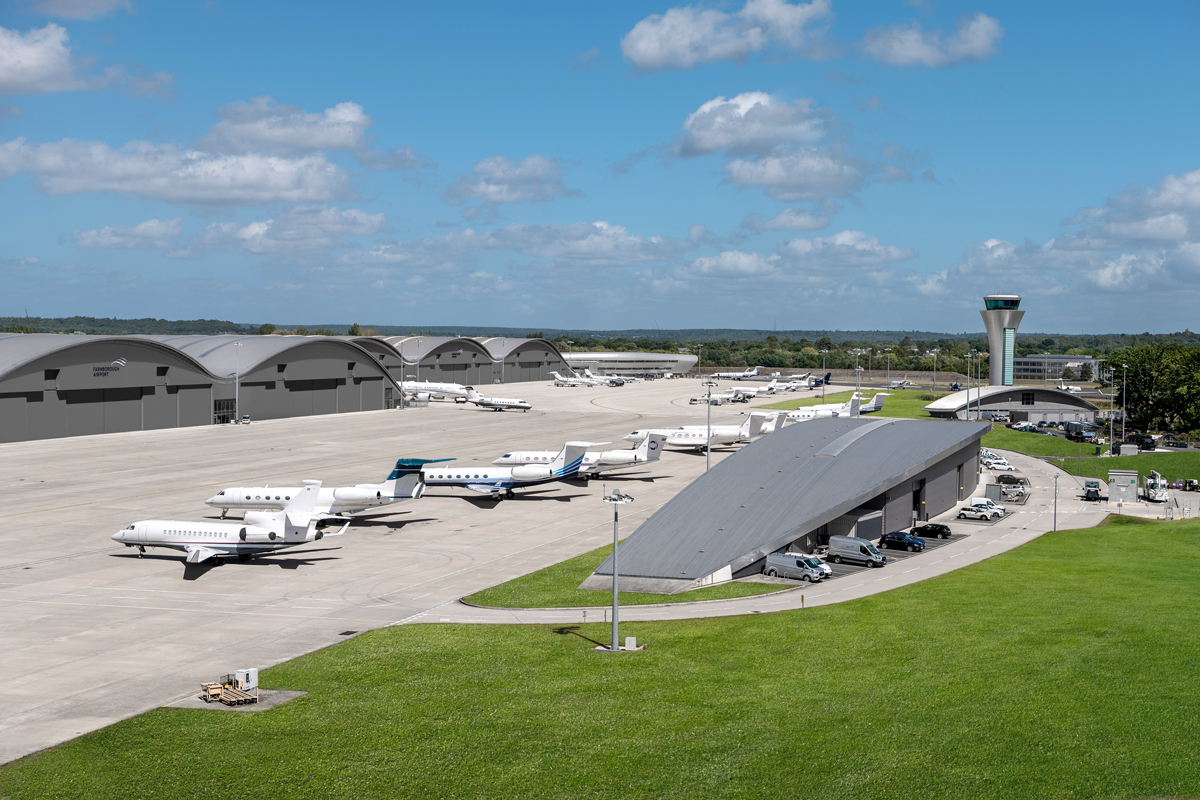


London, a global hub for business and leisure, offers a diverse array of airports, but for the discerning private jet traveler, not all are created equal. While commercial giants like Heathrow and Gatwick dominate the landscape for scheduled passenger flights, their complex slot regulations and prohibitive handling fees render them largely unsuitable for the agility and discretion demanded by private aviation. Instead, a specialized network of airports caters specifically to the private jet market, each offering unique advantages in terms of location, facilities, and exclusivity.
The selection of the right airport can significantly impact the overall private flight experience, influencing travel time to central London, ground transportation efficiency, and the level of service encountered. Understanding the distinct characteristics of each private jet-friendly airport is therefore crucial for optimizing a seamless and luxurious journey. From major hubs designed with dedicated FBOs (Fixed-Base Operators) to smaller, more discreet airfields, London's private aviation infrastructure is meticulously designed to meet the varied needs of its elite clientele.
Several larger airports around London are exceptionally well-equipped to handle the specific demands of private flights, offering state-of-the-art facilities and efficient services. London Luton Airport (LTN/EGGW) , located north of the city, is a prime choice, boasting multiple FBOs that provide luxurious lounges, expedited customs, and comprehensive ground handling. Its proximity to major motorways makes it a convenient gateway for those heading to Central London or the northern Home Counties. Similarly, London Stansted Airport (STN/EGSS)
, located north of the city, is a prime choice, boasting multiple FBOs that provide luxurious lounges, expedited customs, and comprehensive ground handling. Its proximity to major motorways makes it a convenient gateway for those heading to Central London or the northern Home Counties. Similarly, London Stansted Airport (STN/EGSS) , situated northeast of London, offers extensive private jet facilities, including numerous FBOs and ample ramp space, making it a popular choice for larger private aircraft and those valuing extensive operational capacity.
, situated northeast of London, offers extensive private jet facilities, including numerous FBOs and ample ramp space, making it a popular choice for larger private aircraft and those valuing extensive operational capacity.
Farnborough Airport (FAB/EGLF) , southwest of London, is often considered the gold standard for business aviation in the UK. Renowned for its dedicated private jet terminal, exquisite FBO services, and commitment to discretion, Farnborough provides an unrivaled experience. Its purpose-built infrastructure ensures rapid turnaround times and a highly personalized service, making it a preferred choice for high-profile individuals and corporate clients.
, southwest of London, is often considered the gold standard for business aviation in the UK. Renowned for its dedicated private jet terminal, exquisite FBO services, and commitment to discretion, Farnborough provides an unrivaled experience. Its purpose-built infrastructure ensures rapid turnaround times and a highly personalized service, making it a preferred choice for high-profile individuals and corporate clients.
London Biggin Hill Airport (BQH/EGKB) , located southeast, offers a strategic advantage for accessing Canary Wharf and the City of London. It prides itself on being a dedicated business aviation airport with excellent FBO facilities, quick transfers, and robust infrastructure, allowing for efficient arrivals and departures.
, located southeast, offers a strategic advantage for accessing Canary Wharf and the City of London. It prides itself on being a dedicated business aviation airport with excellent FBO facilities, quick transfers, and robust infrastructure, allowing for efficient arrivals and departures.
Beyond the larger, more prominent private jet hubs, London's surrounding areas also host smaller airfields that offer a heightened level of discretion and a more intimate arrival experience. Fairoaks Airport (EGTF) , located southwest of London, is a smaller, privately owned airfield that caters to light private jets or turboprop aircraft. Its more modest scale can often translate to even quicker ground handling and a greater sense of privacy, appealing to those who prioritize a low-key arrival. Similarly, Blackbushe Airport (BBS/EGLK), also southwest, provides another option for smaller private aircraft. These airfields, while not offering the extensive FBO amenities of their larger counterparts, excel in providing efficient, no-fuss operations and a greater degree of anonymity, making them ideal for specific client needs where discretion is paramount.
, located southwest of London, is a smaller, privately owned airfield that caters to light private jets or turboprop aircraft. Its more modest scale can often translate to even quicker ground handling and a greater sense of privacy, appealing to those who prioritize a low-key arrival. Similarly, Blackbushe Airport (BBS/EGLK), also southwest, provides another option for smaller private aircraft. These airfields, while not offering the extensive FBO amenities of their larger counterparts, excel in providing efficient, no-fuss operations and a greater degree of anonymity, making them ideal for specific client needs where discretion is paramount.
The choice of a smaller airfield often depends on the exact final destination and the size of the aircraft. For travelers whose ultimate destination is in the outer reaches of London or the Home Counties, these regional airports can significantly reduce ground travel time compared to navigating the heavier traffic routes from larger airports. Their simpler operational procedures can also lead to faster deplaning and departure, further enhancing the efficiency of the private travel experience.
London, as being the preeminent global financial and cultural capital, demands efficient and discreet access for its discerning travelers. While the city is served by several major commercial airports, private aviation uniquely benefits from two highly strategic gateways: London City Airport (LCY) and RAF Northolt (NHT)
and RAF Northolt (NHT) . Each offers distinct advantages tailored to the specific needs of private flyers, ensuring swift and seamless connectivity to the heart of the metropolis or beyond. These specialized airports are integral to London's standing as a leading hub for business and leisure travel, providing unparalleled convenience for those who prioritize efficiency and privacy.
. Each offers distinct advantages tailored to the specific needs of private flyers, ensuring swift and seamless connectivity to the heart of the metropolis or beyond. These specialized airports are integral to London's standing as a leading hub for business and leisure travel, providing unparalleled convenience for those who prioritize efficiency and privacy.
The choice between these two premier facilities often hinges on the precise requirements of the journey. Both provide dedicated Fixed-Base Operator (FBO) services, ensuring rapid ground handling, discreet customs and immigration procedures, and a high level of personalized attention that is the hallmark of private aviation. This specialized infrastructure contrasts sharply with the often congested main terminals of larger commercial airports, significantly reducing ground time and enhancing the overall travel experience for high-value individuals and corporate executives.
London City Airport stands as a unique proposition for private fliers due to its unparalleled proximity to the city's financial heart. Situated just 6 miles (10 km) east of the City of London and Canary Wharf, it offers the fastest ground transfer times to these crucial business districts. This central location makes LCY the preferred choice for business executives and financial professionals whose schedules demand minimal travel time between their aircraft and their meetings.
Operationally, LCY is known for its relatively short runway and a steep 5.5-degree glideslope approach, necessitating specially certified aircraft and highly skilled pilots. While this restricts the types of aircraft that can use the airport, it also ensures an incredibly efficient turnaround. The airport is meticulously managed to facilitate quick departures and arrivals, allowing private jet passengers to be airborne or on their way to central London within minutes of their arrival or prior to their departure, embodying the true spirit of "time is money."
RAF Northolt, a venerable Royal Air Force station located approximately 13 miles (21 km) west of Central London, offers a different yet equally compelling set of advantages for private aviation. As a military airfield with designated civilian access, it provides a highly secure and discreet environment, often favored by heads of state, diplomatic delegations, and those seeking utmost privacy. Its position in West London also offers convenient access to areas such as Mayfair, Kensington, and various West London businesses.
Unlike London City, Northolt boasts a longer runway, accommodating a wider range of private jet aircraft, including larger cabin jets that may not be certified for LCY's steep approach. Its operational hours are more extensive than London City's, providing greater flexibility for late-night or early-morning departures and arrivals. The military precision and infrastructure also contribute to an exceptionally efficient and orderly operational environment, making it a reliable choice for diverse private flight missions.
The decision between London City and RAF Northolt for a private flight hinges significantly on the specific needs of the traveler and the mission profile. For those whose final destination is the Square Mile or Canary Wharf and who are traveling on an aircraft certified for LCY's unique approach, London City offers an undeniable edge in terms of directness and speed of access. It is the epitome of convenience for time-sensitive business engagements.
Conversely, RAF Northolt presents a more versatile option for a broader range of aircraft sizes and offers enhanced discretion. Its extended operational hours provide greater scheduling flexibility, appealing to both business travelers requiring specific timings and leisure travelers seeking a private, unhurried arrival or departure. Ultimately, both airports provide exceptional private aviation experiences, each catering to distinct priorities within London's dynamic landscape.
In stark contrast to the dedicated private aviation facilities, London's major commercial airports, London Heathrow Airport (LHR/EGLL) and London Gatwick Airport (LGW/EGKK), are generally unsuitable for private jet operations. Their primary function is to serve a massive volume of commercial passenger flights, leading to exceptionally stringent slot regulations. Obtaining a suitable slot for a private flight can be incredibly difficult, often requiring extensive lead times and significant flexibility, which runs counter to the on-demand nature of private jet travel.
Furthermore, the costs associated with private jet handling at Heathrow and Gatwick are astronomically high. Landing fees, parking fees, and FBO service charges at these major commercial hubs far exceed those at dedicated private jet airports, often making them financially unviable for routine private flights. The sheer volume of traffic also means that ground movements can be delayed, and the overall experience lacks the privacy and efficiency that private jet travelers expect. Therefore, while these airports are global connectors for commercial airlines, they are intentionally bypassed by the private aviation sector in favor of more specialized and cost-effective alternatives.